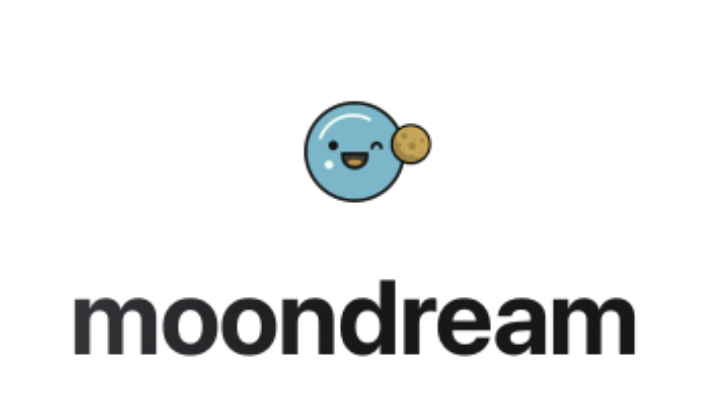moondream2
Maintainer: lucataco

70

| Property | Value |
|---|---|
| Model Link | View on Replicate |
| API Spec | View on Replicate |
| Github Link | View on Github |
| Paper Link | No paper link provided |
Create account to get full access
Model overview
moondream2 is a small vision language model designed by maintainer lucataco to run efficiently on edge devices. It is similar to other compact models like qwen1.5-110b, phi-3-mini-4k-instruct, and meta-llama-3-8b-instruct that aim to provide powerful capabilities while minimizing computational requirements.
Model inputs and outputs
moondream2 takes two inputs - an image and a prompt. The image is provided as a URI, and the prompt is a free-form text description. The model then generates a textual output that describes the contents of the image based on the prompt.
Inputs
- Image: The input image to be described
- Prompt: A text description to guide the model's interpretation of the image
Outputs
- Text: A list of text strings describing the contents of the input image based on the provided prompt
Capabilities
moondream2 can generate detailed, relevant descriptions of images based on a given prompt. It is designed to perform well on edge devices, making it suitable for applications that require efficient on-device inference.
What can I use it for?
You can use moondream2 for a variety of image description and captioning tasks, such as enhancing accessibility for visually impaired users, generating image captions for social media, or powering visual search and recommendation systems. Its compact size and efficiency make it well-suited for deployment on mobile devices, IoT sensors, and other resource-constrained environments.
Things to try
Try providing moondream2 with a range of images and prompts to see the diversity of its output. Experiment with directing the model's focus by crafting specific prompts. You can also compare its performance to other similar compact vision-language models like kandinsky-2.2 and llava-13b to understand its relative strengths and weaknesses.
This summary was produced with help from an AI and may contain inaccuracies - check out the links to read the original source documents!
Related Models

moondream1

10
moondream1 is a compact vision language model developed by Replicate researcher lucataco. Compared to larger models like LLaVA-1.5 and MC-LLaVA-3B, moondream1 has a smaller parameter count of 1.6 billion but can still achieve competitive performance on visual understanding benchmarks like VQAv2, GQA, VizWiz, and TextVQA. This makes moondream1 a potentially useful model for applications where compute resources are constrained, such as on edge devices. Model inputs and outputs moondream1 is a multimodal model that takes both image and text inputs. The image input is an arbitrary grayscale image, while the text input is a prompt or question about the image. The model then generates a textual response that answers the provided prompt. Inputs Image**: A grayscale image in URI format Prompt**: A textual prompt or question about the input image Outputs Textual response**: The model's generated answer or description based on the input image and prompt Capabilities moondream1 demonstrates strong visual understanding capabilities, as evidenced by its performance on benchmark tasks like VQAv2 and GQA. The model can accurately answer a variety of questions about the content, objects, and context of input images. It also shows the ability to generate detailed descriptions and explanations, as seen in the example responses provided in the README. What can I use it for? moondream1 could be useful for applications that require efficient visual understanding, such as image captioning, visual question answering, or visual reasoning. Given its small size, the model could be deployed on edge devices or in other resource-constrained environments to provide interactive visual AI capabilities. Things to try One interesting aspect of moondream1 is its ability to provide nuanced, contextual responses to prompts about images. For example, in the provided examples, the model not only identifies objects and attributes but also discusses the potential reasons for the dog's aggressive behavior and the likely purpose of the "Little Book of Deep Learning." Exploring the model's capacity for this type of holistic, contextual understanding could lead to interesting applications in areas like visual reasoning and multimodal interaction.
Updated Invalid Date

kosmos-2

1
kosmos-2 is a large language model developed by Microsoft that aims to ground multimodal language models to the real world. It is similar to other models created by the same maintainer, such as Kosmos-G, Moondream1, and DeepSeek-VL, which focus on generating images, performing vision-language tasks, and understanding real-world applications. Model inputs and outputs kosmos-2 takes an image as input and outputs a text description of the contents of the image, including bounding boxes around detected objects. The model can also provide a more detailed description if requested. Inputs Image**: An input image to be analyzed Outputs Text**: A description of the contents of the input image Image**: The input image with bounding boxes around detected objects Capabilities kosmos-2 is capable of detecting and describing various objects, scenes, and activities in an input image. It can identify and localize multiple objects within an image and provide a textual summary of its contents. What can I use it for? kosmos-2 can be useful for a variety of applications that require image understanding, such as visual search, image captioning, and scene understanding. It could be used to enhance user experiences in e-commerce, social media, or other image-driven applications. The model's ability to ground language to the real world also makes it potentially useful for tasks like image-based question answering or visual reasoning. Things to try One interesting aspect of kosmos-2 is its potential to be used in conjunction with other models like Kosmos-G to enable multimodal applications that combine image generation and understanding. Developers could explore ways to leverage kosmos-2's capabilities to build novel applications that seamlessly integrate visual and language processing.
Updated Invalid Date

dreamshaper-xl-turbo

141
dreamshaper-xl-turbo is a general-purpose Stable Diffusion model created by lucataco that aims to perform well across a variety of use cases, including photos, art, anime, and manga. It is designed to compete with other large language models like Midjourney and DALL-E. dreamshaper-xl-turbo builds on the dreamshaper-xl-lightning and moondream models, also created by lucataco. Model Inputs and Outputs dreamshaper-xl-turbo takes a text prompt as input and generates a corresponding image. The model supports several parameters to customize the output, including: Inputs Prompt**: The text prompt describing the desired image Negative Prompt**: Additional text to specify what should not be included in the image Width/Height**: The dimensions of the output image Num Outputs**: The number of images to generate Guidance Scale**: The scale for classifier-free guidance Num Inference Steps**: The number of denoising steps to use Seed**: A random seed to control the output Outputs Image(s)**: One or more images generated based on the input prompt Capabilities dreamshaper-xl-turbo is capable of generating a wide range of photorealistic and artistic images from text prompts. It has been fine-tuned to handle a variety of styles and subjects, from realistic portraits to imaginative sci-fi and fantasy scenes. What Can I Use It For? dreamshaper-xl-turbo can be used for a variety of creative and practical applications, such as: Generating concept art and illustrations for games, books, or other media Creating custom stock images and graphics for websites and social media Experimenting with different artistic styles and techniques Exploring novel ideas and scenarios through AI-generated visuals Things to Try Try providing detailed, evocative prompts that capture a specific mood, style, or subject matter. Experiment with different prompt strategies, such as using references to well-known artists or genres, to see how the model responds. You can also try varying the guidance scale and number of inference steps to find the settings that work best for your desired output.
Updated Invalid Date

sdxl-lightning-4step

158.8K
sdxl-lightning-4step is a fast text-to-image model developed by ByteDance that can generate high-quality images in just 4 steps. It is similar to other fast diffusion models like AnimateDiff-Lightning and Instant-ID MultiControlNet, which also aim to speed up the image generation process. Unlike the original Stable Diffusion model, these fast models sacrifice some flexibility and control to achieve faster generation times. Model inputs and outputs The sdxl-lightning-4step model takes in a text prompt and various parameters to control the output image, such as the width, height, number of images, and guidance scale. The model can output up to 4 images at a time, with a recommended image size of 1024x1024 or 1280x1280 pixels. Inputs Prompt**: The text prompt describing the desired image Negative prompt**: A prompt that describes what the model should not generate Width**: The width of the output image Height**: The height of the output image Num outputs**: The number of images to generate (up to 4) Scheduler**: The algorithm used to sample the latent space Guidance scale**: The scale for classifier-free guidance, which controls the trade-off between fidelity to the prompt and sample diversity Num inference steps**: The number of denoising steps, with 4 recommended for best results Seed**: A random seed to control the output image Outputs Image(s)**: One or more images generated based on the input prompt and parameters Capabilities The sdxl-lightning-4step model is capable of generating a wide variety of images based on text prompts, from realistic scenes to imaginative and creative compositions. The model's 4-step generation process allows it to produce high-quality results quickly, making it suitable for applications that require fast image generation. What can I use it for? The sdxl-lightning-4step model could be useful for applications that need to generate images in real-time, such as video game asset generation, interactive storytelling, or augmented reality experiences. Businesses could also use the model to quickly generate product visualization, marketing imagery, or custom artwork based on client prompts. Creatives may find the model helpful for ideation, concept development, or rapid prototyping. Things to try One interesting thing to try with the sdxl-lightning-4step model is to experiment with the guidance scale parameter. By adjusting the guidance scale, you can control the balance between fidelity to the prompt and diversity of the output. Lower guidance scales may result in more unexpected and imaginative images, while higher scales will produce outputs that are closer to the specified prompt.
Updated Invalid Date